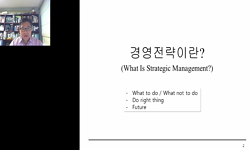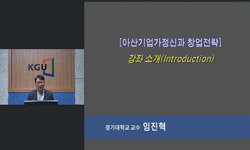The purpose of this study is to look into the realization aspects of complaint speech acts among Koreans in their 20s and 30s. Through DCT, utterances of 200 Koreans were collected to analyze complaint strategies and expressions in each given complain...
http://chineseinput.net/에서 pinyin(병음)방식으로 중국어를 변환할 수 있습니다.
변환된 중국어를 복사하여 사용하시면 됩니다.
- 中文 을 입력하시려면 zhongwen을 입력하시고 space를누르시면됩니다.
- 北京 을 입력하시려면 beijing을 입력하시고 space를 누르시면 됩니다.

한국인의 불평 화행 실현 연구 -20, 30대의 전략 및 표현 사용 분석을 중심으로- = A Study on Realization Aspects of Complaint Speech Acts among Koreans in their 20s and 30s: A Focus on the Analysis of the Strategies and Expressions used by Koreans in their 20s and 30s
한글로보기https://www.riss.kr/link?id=A108569659
-
저자
황선영 (숭실대학교)
- 발행기관
- 학술지명
- 권호사항
-
발행연도
2021
-
작성언어
Korean
-
주제어
Speech act of complaint ; Strategy ; Expression ; Korean Native Speaker ; 불평 화행 ; 전략 ; 표현 ; 한국어 모어 화자
-
등재정보
KCI등재
-
자료형태
학술저널
- 발행기관 URL
-
수록면
213-244(32쪽)
- DOI식별코드
- 제공처
-
0
상세조회 -
0
다운로드
부가정보
다국어 초록 (Multilingual Abstract)
The purpose of this study is to look into the realization aspects of complaint speech acts among Koreans in their 20s and 30s. Through DCT, utterances of 200 Koreans were collected to analyze complaint strategies and expressions in each given complaint situation. Complaint situations were categorized into four types according to the object of complaint, aggressiveness of interlocutor’s utterance, and intimacy between speaker and listener. Complaint strategies were analyzed through multiple response analysis, and complaint expressions were monitored for respective frequency. As results of analyzing complaint strategies by each situation type, it was found that Koreans tended to complain directly and expressively to unfamiliar interlocutors’ aggressive utterances (Type A). In cases of unfamiliar interlocutors’ non-aggressive utterances (Type B), Koreans usually tried to explain the problem and request for a solution.
When a familiar interlocutor made a non-aggressive utterance (Type C), Koreans tended to directly complain about such behavior and provide instructions to the listener. When a familiar interlocutor complained about a non-interlocutors (Type D), Koreans used the strategy of sympathizing. In employing complaint strategies, the gender and age group factors were mostly insignificant. However, males tended to prefer S8(instructing) whereas S9(questioning) and S11(explaining the context) were more popular among females. Unrealization of complaint speech acts was more frequent in conversations with unfamiliar interlocutors than familiar ones. In strongly upsetting complaint situations, many chose to report directly to the police rather than directly deal with an unfamiliar speaker. Most frequently used expressions in complaint speech act situation types were those related to strategies.
In Type A, expressions pointing out the listeners’ fault (-지(요), -잖아(요)) or emphasizing the speakers intention (-(으)세요, -(으)ㄹ게요) were commonly employed, whereas expressions of request (-아/어 주세요, 저기요) were more frequent in Type B. In Type C, along with expressions pointing out the listeners’ fault (-잖아(요)), expressions to ask for a solution (어떡해) or conventional complaint expressions (뭐야, 장난해) were repeatedly observed. In Type C, expressions of sympathy (그러게, 그치, 나도) were often used. Unlike existing literature, this study picked out the contexts where complaint speech acts are likely to be realized, and went on to analyze the strategies according to each context and extract native Korean speakers’ commonly used expressions. The study will serve as a baseline data in teaching complaint speech acts and expressions in actual fields of Korean education.
국문 초록 (Abstract)
본 연구에서는 20, 30대 한국인의 불평 화행 실현 양상을 알아보고자 한다. 이를 위해 DCT를 통해 20, 30대 한국인 200명의 발화를 수집하여, 불평 상황별 불평 전략과 표현을 분석하였다. 불평을 ...
본 연구에서는 20, 30대 한국인의 불평 화행 실현 양상을 알아보고자 한다. 이를 위해 DCT를 통해 20, 30대 한국인 200명의 발화를 수집하여, 불평 상황별 불평 전략과 표현을 분석하였다. 불평을 야기하는 상황은 ‘불평의 대상, 상대 발화의 공격성, 화청자 간 친밀도’에 따라 네 가지 유형으로 분류하였다. 불평 전략은 다중응답분석으로 표현은 빈도를 분석하였다.
상황 유형별로 전략을 분석한 결과, 낯선 상대가 공격적 발화를 하는 상황(A 유형)에서 한국인들은 상대의 행동에 직접적으로 불평하고, 자신의 의지를 표명하는 방식으로 불만을 표현하였다. 낯선 상대의 비공격적 발화 상황(B 유형)에서는 주로 문제 상황을 설명하고 해결책을 요청하는 방식으로 발화를 하였다. 친한 친구의 비공격적 발화 상황(C 유형)에서는 행동에 대해 직접적으로 불평하고, 명령하는 방식으로 말을 하였다. 그리고 친한 친구가 제3자에 대한 불만을 말하는 상황(D 유형)에서는 같이 공감하는 전략을 사용하였다.
한국인의 불평 전략 사용에 대해 성별과 연령대 별 차이를 살펴본 결과, 성별이나 연령대 별 차이가 크게 두드러지지는 않았다. 그러나 대체로 S8(명령하기)은 남성이 더 선호하고, S9(질문하기), S11(상황 설명하기)은 여성이 선호하는 경향을 확인할 수 있었다.
상황 유형별 불평 화행의 미실현 빈도를 비교한 결과, 낯선 상대와의 대화에서 불평 화행을 실현하지 않는 비율이 더 높았다. 화자의 불평을 강하게 야기하는 상황에서 낯선 화자에게는 대화로 직접 상대하는 대신 경찰에 고발하거나 신고하겠다는 의견이 많았기 때문이다.
불평 화행에서 자주 쓰이는 표현을 상황 유형별로 분석한 결과, 전략과 관련 있는 표현의 사용 빈도가 높았다. 즉, A 유형에서는 상대의 잘못을 지적하고(‘-지-, -잖-’), 명령하거나 화자의 의도를 나타내는 표현(‘-(으)세요, -(으)ㄹ게요’ 등)이 자주 사용되었고, B 유형에서는 요청할 때 자주 쓰이는 표현(‘-아/어 주세요, 저기요’ 등)이 많이 사용되었다. C 유형에서는 상대의 잘못을 지적하는 표현(‘-잖-’)과 해결 방안을 묻는 표현(‘어떡해’)과 더불어 ‘뭐야, 장난해’ 등과 같은 관용적인 불평 표현도 자주 나타났다. D 유형에서는 공감하는 표현(‘그러게, 그치, 나도’ 등)이 많이 쓰였다.
본 연구는 기존의 불평 화행 연구와 달리 불평 화행의 실현 가능성이 높은 상황을 선정하였고, 상황에 따라 전략뿐 아니라 한국어 모어 화자가 자주 사용하는 표현을 추출했다는 데 의미가 있다. 본 연구 결과는 한국어 교육 현장에서 불평 화행의 전략과 표현을 교수할 때 기초 자료로 활용될 수 있을 것이다.
동일학술지(권/호) 다른 논문
-
- 이중언어학회
- 이경보
- 2021
- KCI등재
-
An Acoustic Analysis of the Pragmatic Meanings of -ketun with Boundary Tones in Korean Responses
- 이중언어학회
- 우보의
- 2021
- KCI등재
-
한국 거주 학령기 고려인 아동의 한국어-러시아어 능력 비교 분석 연구
- 이중언어학회
- 김진실
- 2021
- KCI등재
-
- 이중언어학회
- 노정은
- 2021
- KCI등재




 KCI
KCI






